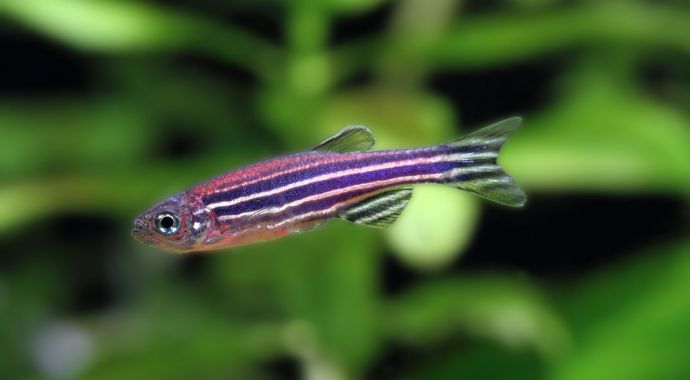Stock Market Models Help NYU Researchers Predict Animal Behavior

The team, led by Maurizio Porfiri, professor of mechanical and aerospace engineering and director of the school’s Dynamical Systems Laboratory, is more accustomed to studying the social behavior of zebrafish—a freshwater species often used in experiments due to its genetic similarity to humans. Porfiri has drawn considerable attention for his interdisciplinary research on the factors that influence zebrafish collective behavior.
However, designing procedures and conditions for animal experiments are time-intensive, and despite careful planning, many experiments yield mixed data. Porfiri and his team, comprising postdoctoral fellow Ross P. Anderson, doctoral student Violet Mwaffo, and former postdoctoral fellow Sachit Butail (now assistant professor at Indraprastha Institute of Information Technology Delhi), set out to develop a mathematical model of animal behavior that could predict the outcome or improve the effectiveness of experiments and minimize the number of fish used in them.
When mapping the movement of zebrafish as they swam, Porfiri and his colleagues observed that the species does not move in a continuous pattern; rather, it swims in a signature style characterized by coasting periods followed by sharp turns. As they plotted the turn rate of the fish over time, the researchers noticed that their data, with its small variations followed by large dips (reflecting fast turns), looked very different from the turn rate of other fish but very similar to another type of data, where such volatility is not only common but well studied: the stock market.
The team embraced the mathematical model known as a stochastic jump process, a term used by financial engineers and economists to describe the price jumps of financial assets over time. Using many of the same tools employed in financial analysis, the researchers were able to create a mathematical model of zebrafish swimming, mining video footage from previous experimental sessions to seed what they hope will become a robust database of zebrafish behavior under varying circumstances.
“We realized that if we could simulate the swimming behavior of these fish using a computer, we could test and predict their responses to new stimuli, whether that is the introduction or removal of a shoal mate, the presence of a robotic fish, or even exposure to alcohol,” Porfiri said. “In behavior studies, you can easily utilize thousands of test subjects to explore different variables. This will allow researchers to replace some of that experimentation with computer modeling.”
Porfiri emphasized that this mathematical model of animal behavior will also allow researchers to make better use of their data following experiments, not just beforehand. “The data that result from zebrafish experiments look quite messy initially,” Porfiri said. “Giving researchers a model they can use to compare, filter, and refine their analysis afterwards will allow them to maximize data for better results.”
Porfiri and his team plan to continue to add data to their model with the hope of creating a toolbox that all researchers engaged in this field of study can utilize.
The idea of incorporating financial engineering to model zebrafish behavior came from Mwaffo, now a doctoral student in Porfiri’s lab who had earned his master’s degree in financial engineering from the NYU Polytechnic School of Engineering.
This work was supported by grants from the National Science Foundation. The full paper, “A Jump Persistent Turning Walker to Model Zebrafish Locomotion” is here.
Learn more about: Maurizio Porfiri
Media Contact
All latest news from the category: Business and Finance
This area provides up-to-date and interesting developments from the world of business, economics and finance.
A wealth of information is available on topics ranging from stock markets, consumer climate, labor market policies, bond markets, foreign trade and interest rate trends to stock exchange news and economic forecasts.
Newest articles

A new puzzle piece for string theory research
Dr. Ksenia Fedosova from the Cluster of Excellence Mathematics Münster, along with an international research team, has proven a conjecture in string theory that physicists had proposed regarding certain equations….

Climate change can cause stress in herring larvae
The occurrence of multiple stressors undermines the acclimatisation strategies of juvenile herring: If larvae are exposed to several stress factors at the same time, their ability to respond to these…

Making high-yielding rice affordable and sustainable
Plant biologists show how two genes work together to trigger embryo formation in rice. Rice is a staple food crop for more than half the world’s population, but most farmers…



